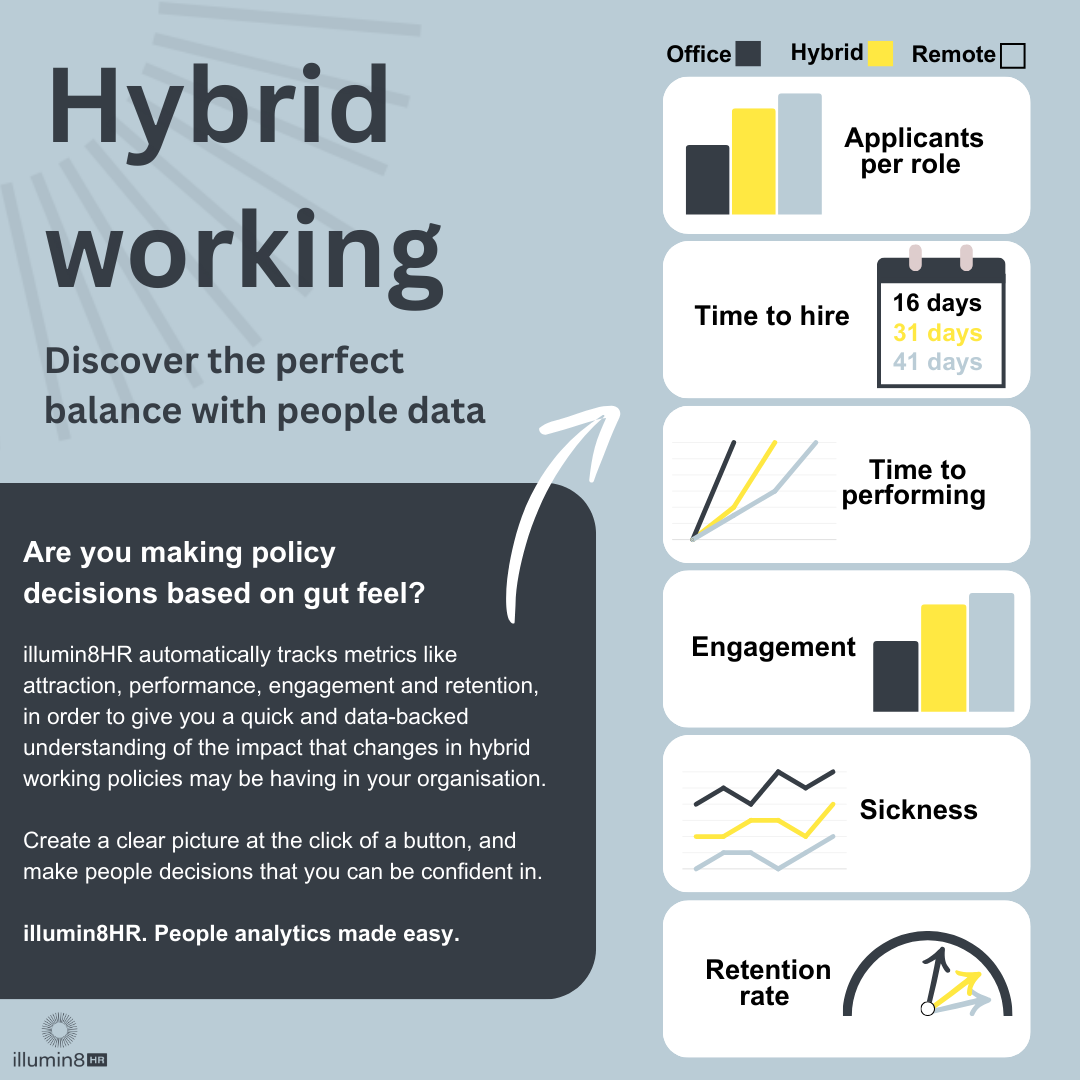3 min ⏱︎
Introduction
In the landscape of modern work, the concept of hybrid working has become a beacon of flexibility and adaptability. As organisations around the globe embrace this transformative approach, the role of people data takes centre stage in sculpting the ideal balance between remote and office-based work. Below we explore how harnessing the insights from people data can be the key to unlocking the full potential of a successful hybrid working model.
Understanding People Data
People data can provide a goldmine of information about how individuals work, communicate, and thrive in their professional environments. Leveraging this data allows organisations to make data-driven decisions, ensuring that the hybrid model adopted is not a compromise but a strategic advantage.
Productivity Insights
People data allows organisations to delve into the nuances of employee productivity. By analysing when and where individuals are most productive, businesses can tailor their hybrid model to accommodate peak performance. Whether it’s a quiet home office or the collaborative buzz of the workplace, people data can reveal the optimal conditions for different tasks and overall hybrid working balance.
Employee Satisfaction and Well-being
A thriving workforce is a happy and healthy one. People data provides a window into employee satisfaction, stress levels, and overall well-being. By monitoring these metrics, organisations can make informed decisions to enhance work-life balance, mental health support, and job satisfaction, creating a positive and sustainable work environment.
Talent Strategy
The war for talent has never been fiercer. People data can aid in talent acquisition and retention strategies by providing insights into employee turnover, recruitment success, and satisfaction levels. Understanding what top talent seeks in a hybrid working environment enables organisations to attract and keep the best and brightest.
Which metrics?
The below infographic demonstrates just some examples of the types of metrics you could begin to track in order to gauge hybrid working effectiveness for your organisation.

Conclusion
In the age of hybrid work, success lies in the ability to navigate the nuanced needs of a diverse workforce. People data emerges as the compass, guiding organisations toward the perfect balance between remote and office-based work. By tapping into a rich tapestry of insights, easily accessed and interpreted through illumin8HR, organisations can craft a hybrid working model that not only meets the needs of the present but also paves the way for a dynamic and resilient future of work.
Activ8’s Managing Director, Heidi Lopez commented: “Hybrid working has become a real emotive subject and all too often, policy decisions are made based on gut feel as there isn’t a one size fits all or historic evidence of what will work. The impact of changes to hybrid working policies on attraction, performance, engagement and retention, take time to bed in so having a platform like illumin8HR that automatically tracks these for you saves you time and gives you a tangible understanding of what’s working and what it’s costing you. It also makes it easier to link HR data points together. A recent example we’ve seen is comparing sickness absence on ‘office days’ vs ‘home-working’ days, where sickness rates tripled on office days, impacting cost and productivity. That’s the kind of data you need to help inform decisions going forward.”
Click here to learn more about our people analytics platform, illumin8HR, and how it can help you to bring your data together seamlessly to create user friendly, actionable insights for your organisation.




